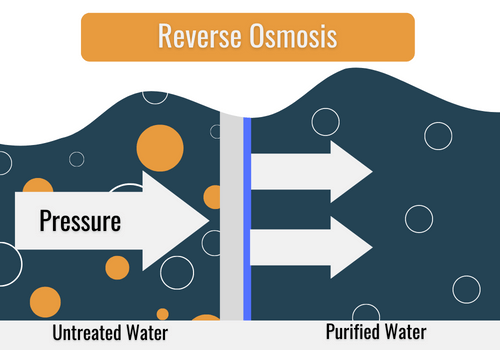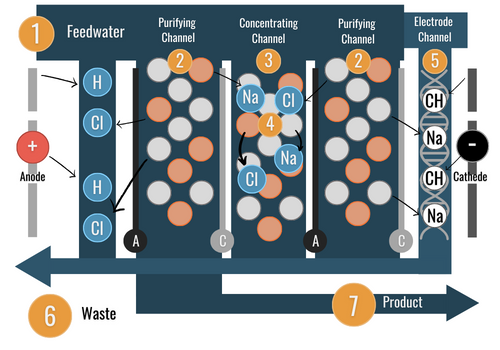Cleanroom manufacturing processes require some of the cleanest water in the world. The most demanding applications are semiconductor manufacturing and pharmaceutical manufacturing which require “ultra-pure” water. The cleanroom water systems use multiple steps to create the water.
The typical cleanroom water system uses both reverse osmosis and deionizing systems.
Most cleanroom water systems start with a sediment filter to remove the largest particles, then a carbon filter to remove volatile organics.
The next step is the reverse osmosis system which removes up to 98% of impurities/contaminants in the cleanroom water. Reverse osmosis systems push water through the semipermeable membrane to filter out contaminants. Often there is a UV lamp in the water line to kill bacteria. Cleanrooms can use liquid monitoring systems that count particles in water to measure cleanliness after the reverse osmosis step.
Following reverse osmosis, the next step is a deionizing system to remove ions (minerals and salts) ed by passing the water over charged resin beds. The effectiveness of ion contaminant removal is measured by the resistivity of the water which can reach megaohms/cm. By comparison, tap water is typically 1000-5000 ohms/cm. In some cases the cleanroom water is purified even further by running over other chemical beds.
Another method of purifying water for cleanrooms is distilling water. By converting water into steam, you can remove the minerals and organic contaminants. Typical resistance of distilled water is 500,000 ohm/cm. It is an extremely energy intensive process. This is a less common cleanroom water system than reverse osmosis and deionization.
The author Anthony Chien has worked at American Cleanroom Systems for the past 10 years. He has more than 40 years of cleanroom experience. Anthony has a BS and MS in Electrical Engineering specializing in semiconductor manufacturing from the University of Illinois. American Cleanroom Systems is a design-build modular cleanroom manufacturer based in Rancho Santa Margarita CA. American Cleanroom Systems is your expert in ISO-5 thru ISO-8 (class 100 to class 100k) modular cleanrooms for pharmaceutical cleanrooms, medical device cleanrooms, and industrial cleanrooms.


